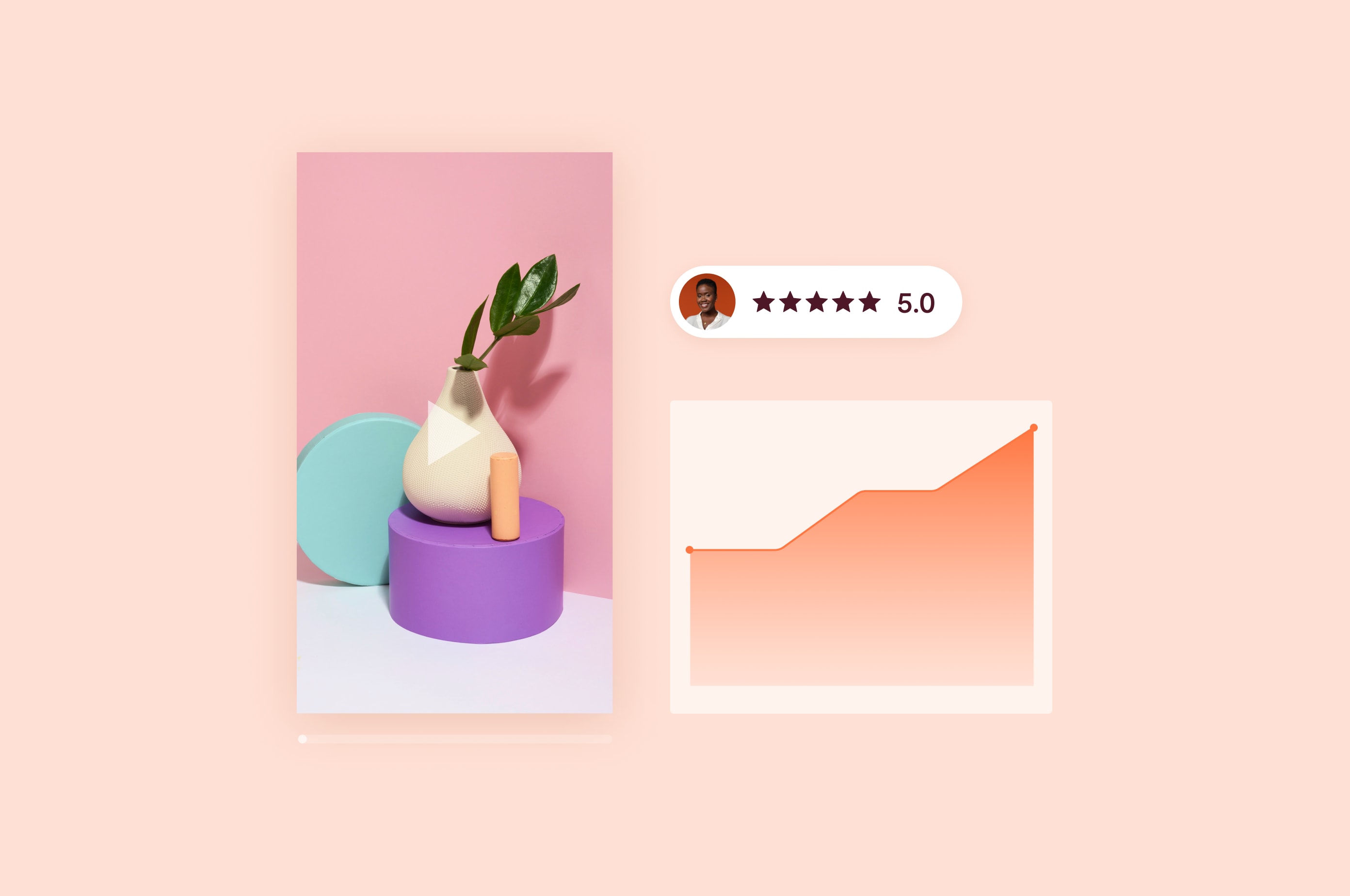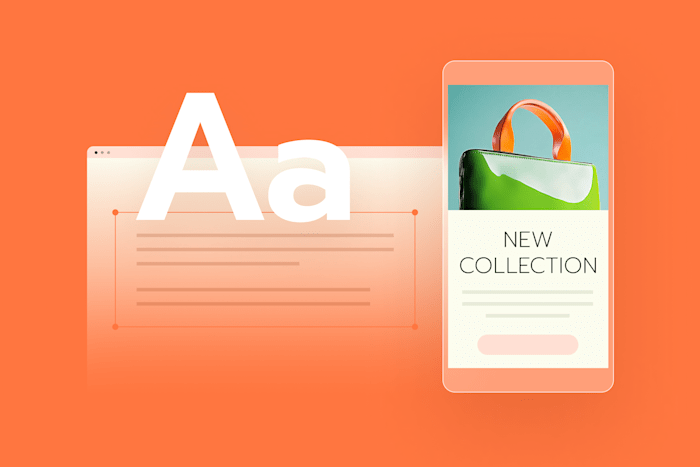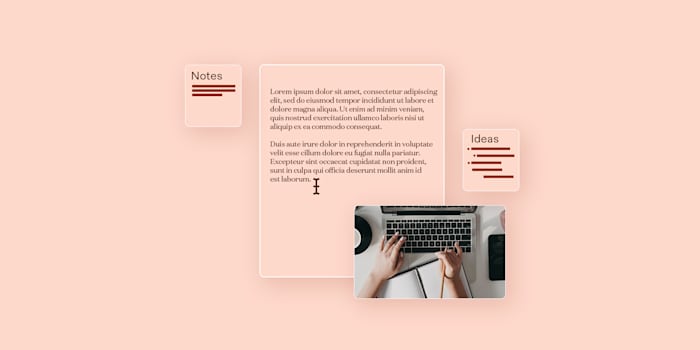What is Content Design and Why it Matters in 2025
Content design merges UX principles, creativity, and data to craft user-centered digital experiences. This guide covers its principles, processes, and insights.
 February 27, 2025
February 27, 2025 7 minute reading
7 minute reading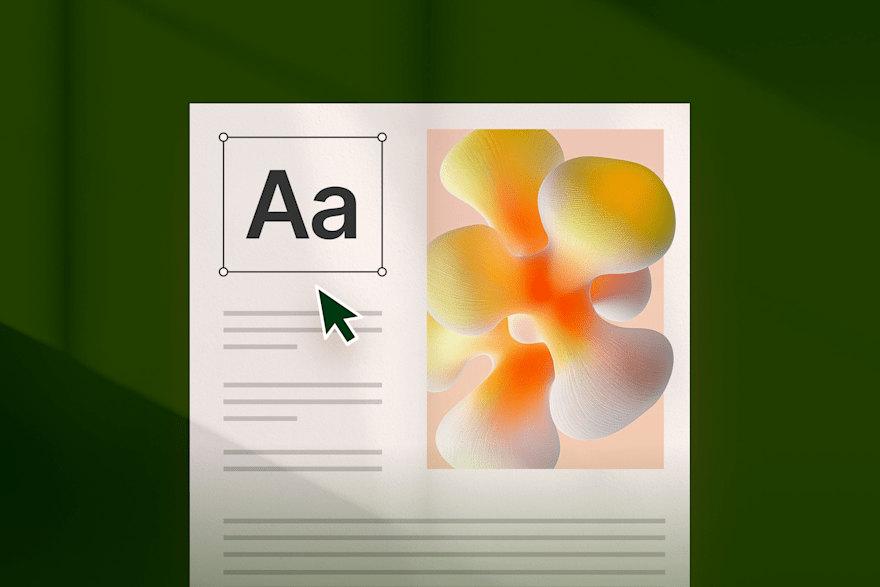
Let’s say you’ve just launched a new mobile app. You’re confident you’ve done everything right to make the app enjoyable and easy for your users to navigate. However, the reviews tell a different story: users have left negative feedback saying the app is hard to use. What could be the problem?
If you developed your app without properly researching your target audience, it might not align with their expectations. Effective content design can help you overcome this challenge.
In this guide, we’ll cover what content design is, its core principles, its process, and the best practices to help you create good content design.
What is content design?
Content design is the process of strategizing and designing digital content that serves both users’ needs and business objectives. In content design, “content” doesn’t just mean articles and blog posts. It also includes the text on sitemaps, error messages, and other content that users can see and navigate on a website.
What’s the difference between UX writing and content design?
While UX writing and content design both focus on user experience and work within the product design team, there are differences between the two.
UX writers focus more on the text that appears in a user interface, like microcopy on a site and social media buttons and error messages.
Content design, on the other hand, goes beyond the text and focuses on how content is structured, formatted, and presented in an accessible, intuitive, and visually appealing way.
Can AI handle content design?
Today, creating content that connects with users is more important than ever. While AI has become a commonly used tool in content creation, it lacks empathy and contextual understanding of real-world content.
Since content design is a user-centric process that puts the users first and focuses on people, it requires human insight to resonate with audiences. As content designer Andrew Tipp says, “Ultimately, content design is about people, not technology.”
What are the core principles of content design?
Apply the core principles below to practice good content design.
User-centered design
With content design, you need to understand user needs and expectations. Conducting user research is a good way to understand your target users—their goals, needs, and pain points. You can find expert content designers on Fiverr who can guide you through the research and design process. Knowing your target users will help you make informed design decisions.
For example, creating a user persona can help guide your decision-making in content design. According to the Interaction Design Foundation, user personas can help you see that different users have different needs, behaviors, experiences, and goals.
Purposeful content
Publishing content like blog posts or resource articles provides your audience with relevant information and helps establish your brand as a trusted source of information.
Your content should also have a clear call to action (CTA) to offer extra guidance to your audience. Your CTA could be to encourage them to buy your product, hire your services, or subscribe to your newsletter. If you publish purposeful content with a clear CTA, you can provide your audience with the information they need and possibly convert them into active users for your business.
Simplicity and clarity
Users read blog posts and resource articles because they want to get information easily. This is why using simple and direct language is crucial to good content design. If you use plain language and avoid overly technical terms and jargon, your content will be easier to understand.
For example, Gov.uk uses plain language to communicate complex information in a way that’s easy for users to understand. They also have a comprehensive menu that efficiently sorts their services and resources so users can easily navigate through the site and find the information they need.
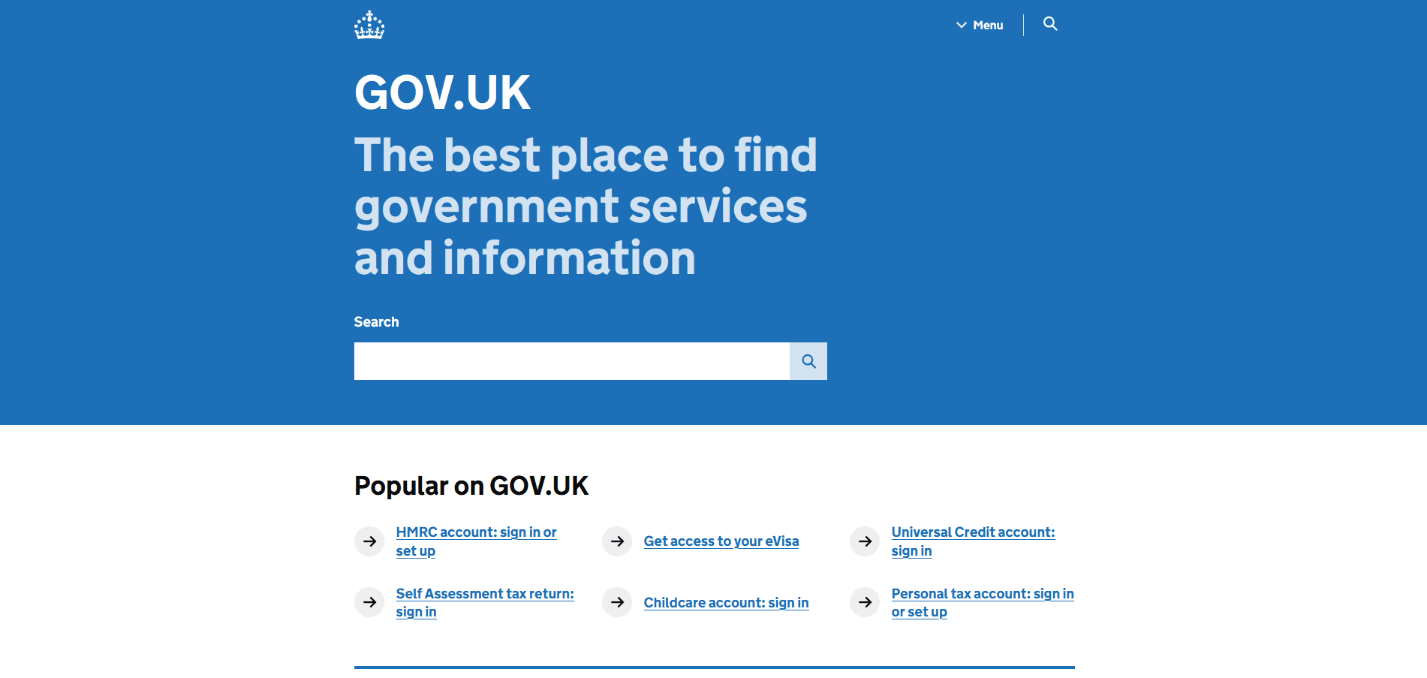
Gov.uk
Find a Content Writer for Hire
Accessibility
If you want your business to be more accessible, focus on creating inclusive content. Inclusivity is necessary because it ensures your content is purposeful and relevant to a diverse audience, regardless of their ethnicities, identities, backgrounds, and abilities.
Here are a few ways to make your content accessible and inclusive:
Context: Communicate information in a way that’s easy to understand for users of various abilities. For example, adding alt text to images can help users with visual impairments and disabilities know what’s being depicted in the images.
Inclusive language: Be mindful of different cultures, identities, abilities, and backgrounds. Avoid using language that could be considered offensive or exclusive. For example, using gender-neutral terms can help promote inclusivity and avoid assumptions about a person’s gender identity.
Internationalization: Offering multiple language translations for your content makes it more accessible to global audiences. However, make sure to consider cultural contexts when adapting your content to different languages to ensure that it’s properly localized for a smooth user experience.
A real-life successful example of inclusive content design is Discord. The messaging platform maintains a playful and relatable personality, and its design reflects that through its inclusive tone and voice. For example, their Help Center page has simple categories, with each section written with casual and conversational microcopy to give the user an idea of what each category is about.
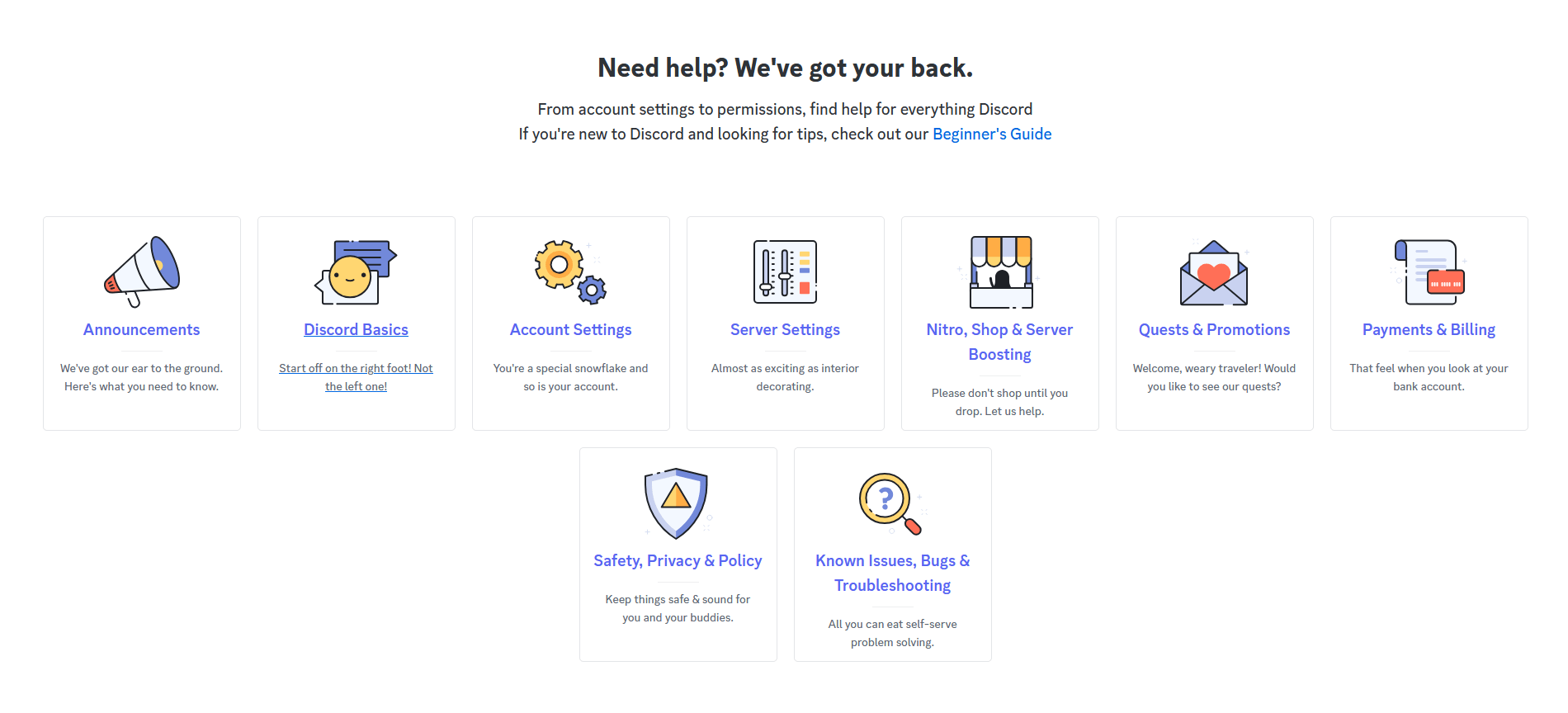
Discord
Other examples of Discord integrating accessibility and inclusivity in their design include having a text-to-speech setting, which has a bot read messages out loud to the user, and an option to add your pronouns to your profile.
Consistency
Your content should help strengthen brand awareness. Keeping a consistent voice and tone and a uniform design language can help establish your brand while reinforcing trust and credibility. If you maintain consistency in how you present your brand, your users will have more confidence in you. On Fiverr, you can find expert content designer strategists to help you create a cohesive, impactful brand presence.
An example of good content design consistency is Google. It started as a search engine in 1998 but has since moved on to launching more products like Gmail, Google Drive, and Google Maps. Using uniform design elements and brand consistency, Google makes it easy for users to recognize its wide range of products and services as part of the Google brand.

Evidence-based decisions
User experience (UX) research is a crucial part of the content design process that lets you identify user needs, expectations, and pain points. Analyzing and evaluating the data from UX design research and integrating your findings can help you make informed decisions when designing your product.
User research methods include:
A/B testing: Comparing different product versions to see which one delivers a better user experience.
Usability testing: Having a group of representative users test a site to determine how easy it is to use.
User interviews: Conducting interviews to gather insights on user behavior, needs, and expectations.
Contextual relevance
According to McKinsey, 71% of consumers expect brands to be able to provide personalized experiences. Personalization is a good way to improve user experience. By knowing what your users want, you can offer customized information or products and services that are relevant to them. This improves user experience because it makes your users feel heard and understood.
The music streaming platform Spotify has a Discover Weekly playlist unique to each user. The playlist recommends songs to the user weekly based on songs they previously listened to.

Spotify
Discover Weekly’s personalized approach keeps content relevant because it offers Spotify listeners something new to look forward to every week.
A study on Indonesian users also revealed that Discover Weekly positively impacted user satisfaction and loyalty. This shows that this playlist feature is something that users enjoy.
Visual and structural design
Content design is about optimizing content to ensure a smooth user experience, making your product intuitive and easy to navigate. The information displayed on your site should be categorized and presented in a way that makes sense to the people using it.
For example, Canva’s templates page is designed to be easy to navigate. Template options are presented in a grid view so users can easily browse various templates at a glance.
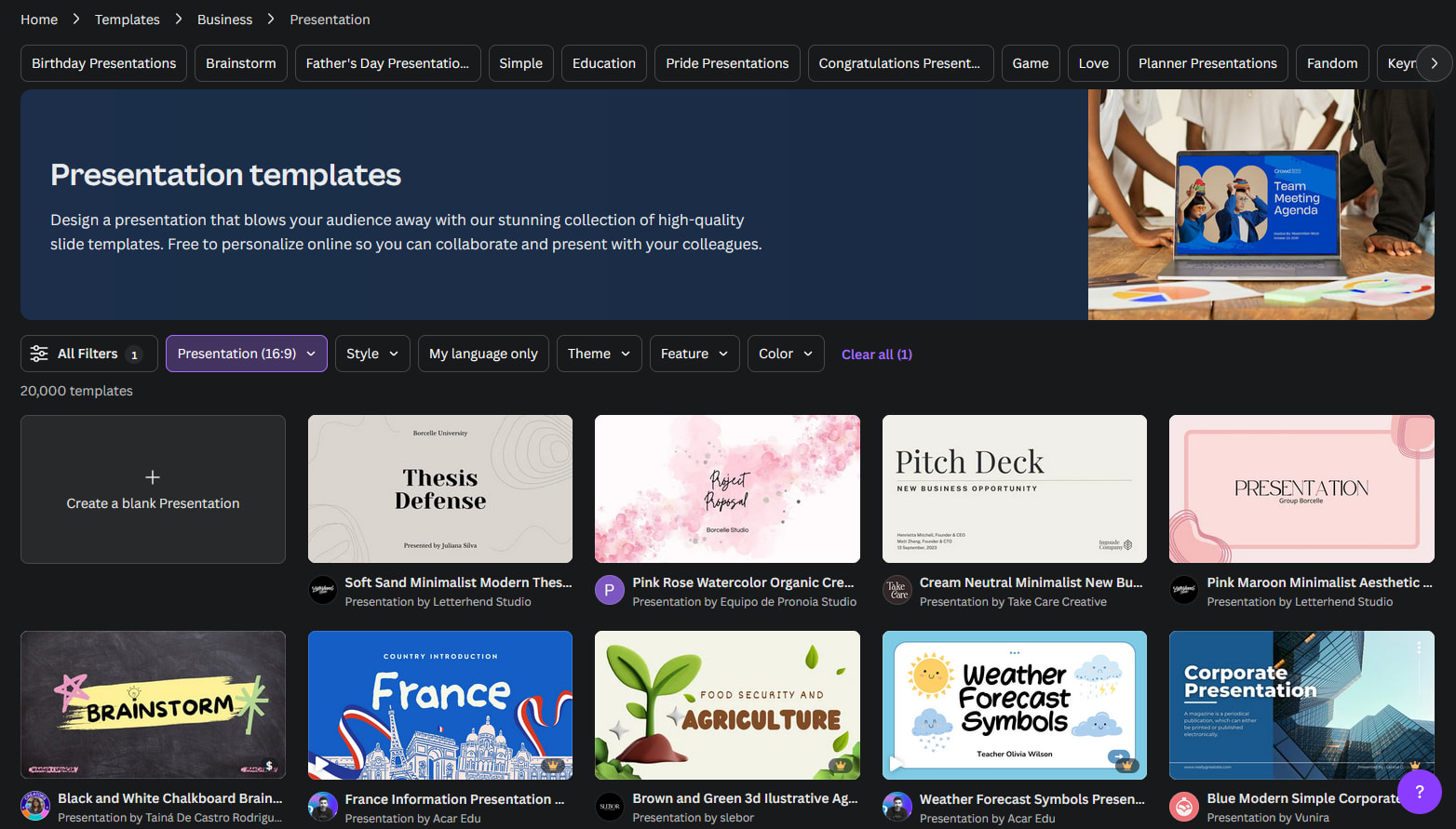
Canva
SEO alignment
In addition to being intuitive and accessible, content should be easy for users to find. This involves optimizing it for search engines with effective SEO writing and strategies.
You can do this by using relevant keywords in titles, headers, meta descriptions, and in the text itself. But avoid overusing keywords because it can lower your search rankings, making it harder for users to find your site.
Hire an SEO expert on Fiverr
What is the content design process?
Here’s an overview of the content design process:
User research and discovery
In the research and discovery phase, content designers gather relevant user data. This data helps them understand who they’re designing for, including their behavior, goals, and pain points. This data can be gathered through design surveys, analyzing user feedback, and researching user patterns and trends.
Content auditing and analysis
Content auditing is the process of going through and evaluating existing content, such as your website and published articles. In this phase, you check the current available content to determine what should be updated, removed, or enhanced to provide more relevant and valuable content to your users. On Fiverr, expert content auditors can help you optimize your content and improve its impact.
Information architecture
This phase focuses on organizing content in a clear and logical way. After conducting user research and auditing your content, you need to determine how to categorize and prioritize content and decide what should be included on your website.
Content creation and iteration
In this phase, content designers collaborate with other teams to start making and sharing content and iterating based on user feedback. Whether it’s improving clarity or language and formatting, the goal is to keep iterating and adjusting the content design to improve user experience.
Testing and optimization
Content design is about providing the best solution to enhance user experience based on data and evidence gathered from research and analytics. Even after content has been created and shared, the process doesn’t stop there. User trends and expectations change, and content needs to be tested and optimized to stay relevant and competitive.
Content design best practices
Content design is all about combining structure, language, and visuals to create intuitive and engaging experiences. Here are the best practices to help you achieve that:
Microcopy excellence
According to David Hall, Head of Design for C&R, microcopy is the small text on apps and websites, like button text, page titles, error messages, section captions, and page titles.
While microcopy may seem small compared to long-form articles and blog posts, it’s just as important, especially when it comes to user experience. Without any microcopy, users may have a hard time navigating through your app or website.
Here are a few tips for writing good microcopy:
Keep it simple: Keep your sentences and paragraphs short. Don’t use jargon or technical terms unless necessary.
Use cases correctly: Know when to use sentence case and when to use title case. Sentence case work better for microcopy for buttons and links because it’s easier to read. You should also capitalize proper names and terms.
Have a clear call to action: When writing microcopy for CTA buttons, make sure they’re easy to understand. For example: “Create an account” and “Add to cart.”
Localization and globalization
To reach diverse audiences, you need to adapt your content for accessibility through localization and globalization. In an article by Claudia Müller and Sarah Sandführ on UX Content Collective, they defined localization as “the process of adapting a product or service to suit a specific country.”
According to a 2024 report by Ethnologue, roughly 1.5 billion people speak English worldwide. This makes up less than 20% of the world’s population. In addition, a Statista report shows that 65% of users prefer content in their own language, and 40% won’t buy from websites in other languages. This shows that localizing and globalizing your content is essential if you want to cater to diverse audiences.
Find a Localization Expert for Hire
Tone and voice consistency
Maintaining consistency in your tone and voice is important because it reinforces your brand’s professionalism and credibility. However, note that there are differences between the two:
Tone is the emotion and mood of your content. It can vary depending on the situation. For example, a brand with a friendly voice will use a more cheerful and conversational language when welcoming users who visit their site and a reassuring and empathetic tone for troubleshooting articles.
Voice reflects your brand’s personality. Unlike tone, the brand voice should be consistent because it conveys the character behind your brand and what you want your brand to be known for. For example, if your brand is known for being friendly and playful, then your content should maintain a more casual and approachable voice.
If you keep your brand tone and voice consistent, your users will be more confident and comfortable with your brand.
Scannability and readability
People visit your site and read your content because they want to get information, so it’s essential to present information clearly and easily. The user journey on your site should be seamless. Users should be able to scan a page and read its contents without getting overwhelmed by long passages and blocks of text.
Here are a few tips on making your content scannable and readable:
Keep sentences short: Long sentences can be hard to read, especially for those who read on mobile devices. Use short sentences when you can.
Write short paragraphs: Paragraphs may also be harder to read if they’re too long. Keep your paragraphs short and avoid adding unnecessary information.
Content chunking: Use bullet points, numbered lists, and subheadings whenever possible.
Use descriptive headings: Make your headings clear and descriptive so readers will have an idea of what each section is about without reading the whole text.
User feedback integration
Content designers conduct user research and collect feedback. They then evaluate the information gathered to create solutions that help enhance content design. By integrating user feedback into the content design process, you can identify issues and improve your product design.
Collaborating with cross-functional teams
The content design team can work with various teams to ensure the design meets user needs and aligns with business goals. By collaborating with cross-functional teams, they can streamline their work process and improve decision-making with input from different team members. Working with teams also improves adaptability, allowing them to respond more efficiently to changes in user needs and update the product accordingly.
Error prevention
Even with intuitive content design, there may be times when users make mistakes. For example, users who still aren’t familiar with your website may click the wrong button. You need to practice error prevention and prepare for unexpected issues in your design. Predict possible mistakes that your users can make and try to take steps to prevent them.
Hire content designers on Fiverr
Learning content design principles and its process can give you ideas on how to enhance user experience. However, trying to go the DIY route could take a lot of time and resources. On Fiverr, you can find verified and experienced content design experts to help improve the user experience for your products.
With flexible project sizes and a wide pool of verified freelancers, you can find an expert easily. From writing compelling web content and UX copy to localizing your content for diverse audiences, Fiverr connects you with pros who know how to create user-centric content. Fiverr’s intuitive search helps you find the right experts for your project and budget.
Find a Content Strategy Expert for Hire
Hire a content designer on Fiverr to transform your content in 2025.
Content design FAQs
What’s the difference between content design and UX writing?
UX writing and content design are both user-centered, but they differ in how they shape user experience. UX writing enhances user experience through text like microcopy and articles. Content design enhances user experience through how the information is presented, like a website’s structure or sitemap.
Do I need a content designer for my project?
Knowing the core principles, processes, and best practices of content design can help you go the DIY route. However, it would be beneficial to hire a content designer because they can help with the following:
Designing or overhauling apps and websites
Launching new products/services
Improving content for accessibility and inclusivity
How does content design fit into the product development process?
Working with a content designer during the product development phase provides insights into your target users’ needs, goals, and pain points. This information helps your team make informed decisions to deliver a better user experience.
What tools do content designers use?
Content designers use plenty of tools to automate and scale their work. Tools used by content designers include:
Figma
Lokalise
Notion
Miro
Chatfuel
